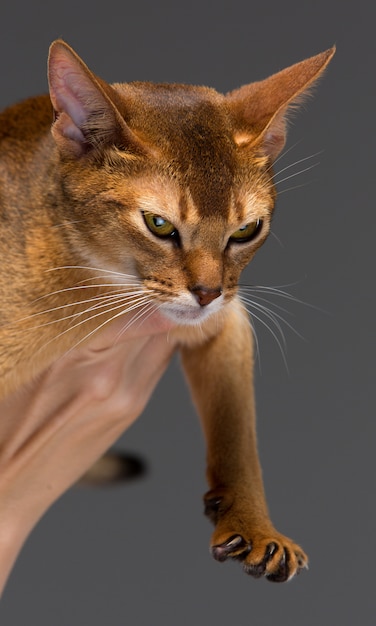Fascinating Facts about Orange Cats

Orange cats are known for their vibrant fur color.
Male orange cats are more common than females.
Orange cats have a higher risk of developing certain health conditions, such as skin cancer.
Many famous fictional cats, such as Garfield, are depicted as orange.
The orange color in cats is caused by a specific gene mutation.
Orange cats are often described as being friendly and sociable.
Contrary to popular belief, not all orange cats are tabbies.
Some orange cats have patterns that resemble a tortoiseshell cat, known as a tortoiseshell and white.
Orange cats are believed to bring good luck in some cultures.
Orange cats have a tendency to be vocal and meow more frequently.
The orange gene is recessive, which means both parents must carry it in order to produce orange kittens.
Orange cats are commonly found in mixed breed cats.
The orange fur color can vary in intensity, ranging from a pale apricot to a deep rusty orange.
Orange cats with white markings are often referred to as red and white.
Orange cats are typically great hunters, thanks to their keen instincts.
Orange cats have a higher likelihood of being adopted compared to cats of other colors.
A group of orange cats is referred to as a clowder.
Orange cats are believed to have originated from ancient Egypt.
The orange color in cats is considered to be a symbol of strength and vitality.
Fascinating Facts about Orange Cats part 2
Orange cats are often associated with warmth and comfort.
Some orange cats have a distinct freckling pattern on their face or body.
Orange cats are known for their playful and mischievous nature.
Orange cats are popular choices for therapy and emotional support animals.
The orange fur color can fade with age, resulting in a lighter shade.
Orange cats are more prone to sunburns due to their fair skin pigmentation.
Orange cats have a higher chance of having golden-colored eyes.
Orange cats are considered to be highly adaptable and can thrive in various environments.
The orange fur color is more commonly seen in domestic shorthair cats.
Orange cats are often used in media and advertising due to their eye-catching appearance.
Orange cats are known to have a strong sense of smell.
Orange cats have a higher risk of developing urinary tract issues.
Orange cats are often described as being confident and independent.
The orange gene can be found in other species, such as tigers and lions.
Orange cats are excellent climbers and enjoy exploring high places.
Orange cats are more likely to have a rounder face shape compared to other cat breeds.
Orange cats are known for their loyalty towards their owners.
The orange fur color can appear darker or lighter depending on the lighting conditions.
Orange cats are prone to obesity, so a balanced diet is essential for their health.
Orange cats are often depicted in folklore as bringing good fortune and protection from evil spirits.
The orange fur color is thought to have evolved as a form of camouflage in certain environments.
Orange cats are highly curious and enjoy investigating their surroundings.
Some orange cats have a striped pattern on their back, resembling a tiger.
Orange cats are known to have a strong prey drive and enjoy hunting small animals.
The orange fur color is more commonly seen in cats of European descent.
Orange cats are widely loved for their unique combination of beauty and personality.

